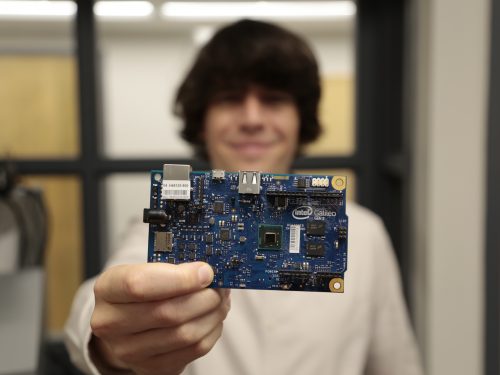We all strive to keep our prized possessions safe. Sometimes those possessions include not just physical items, but also our digital information. Inspired to help us keep our data secure, Yale professor Jakub Szefer is pursuing a research project titled “Security Applications of DRAM Cell Decay Effects.” Szefer is an assistant professor of Electrical Engineering at the Yale School of Engineering and Applied Science. Recently, he received the 2017 Faculty Early Career Development Award from the National Science Foundation, which will provide funding for his research. Szefer is collaborating on this work with his research group, which includes graduate student Wenjie Xiong, as well as researchers in Germany at Technische Universität Darmstadt and Ruhr University Bochum.
Szefer’s project focuses on the use of electronic devices’ unique “fingerprint” to improve computer security. At electronic level, every computing device has a distinctive hardware features, even compared to identical models. These differences originate from manufacturing differences in the devices’ digital circuits, processors, and data storage systems known as dynamic random-access (DRAM) memory. Small variations occur when these devices are manufactured, causing slight deviations in factors such as the length of the wires of circuits or the capacitors’ thicknesses. These minor deviations accumulate to give each device its unique “fingerprint,” which can be used to authenticate and identify the device.
Szefer wants to explore how these fingerprints can be applied to the security of our everyday devices like smartphones phones, computers, and embedded devices. “We hope to show that cryptographic protocols can be designed, which derive their security from not just difficult mathematical problems, but also form the intrinsic properties of the hardware,” said Professor Szefer. Through their continued efforts, Szefer and his collaborators hope to benefit both the hardware security community and consumers who use computing devices every day.
Featured photo by Xander de Vries

